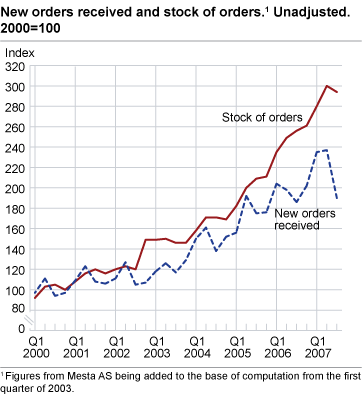Content
Published:
This is an archived release.
Strong decrease in the inflow of new housing projects
The inflow of new orders of new residential buildings decreased in value in the third quarter of 2007 and was 11 per cent lower than in the third quarter of 2006.
The value of company reserves of new residential buildings are now 4 per cent lower than at the end of the third quarter last year. The value of renovation of residential buildings is 9 per cent higher than at the same time last year.
The inflow of new orders of new non-residential buildings remains on a high level. The contractor reserves of new non-residential buildings increased by 7 per cent over the course of the third quarter 2007 and are now 49 per cent higher than at the end of the third quarter last year. The value of renovation of non-residential buildings is 13 per cent higher than at the same time last year.
Fewer new civil engineering works
The contractor reserves of civil engineering works decreased by 6 per cent during the third quarter of 2007 and are now 5 per cent higher than at the same time the year before.
The value of company reserves for the entire construction industry fell 2 per cent over the course of the third quarter of 2007, but remain 15 per cent higher than at the end of the third quarter 2006.
Tables:
Contact
-
Statistics Norway's Information Centre
E-mail: informasjon@ssb.no
tel.: (+47) 21 09 46 42

